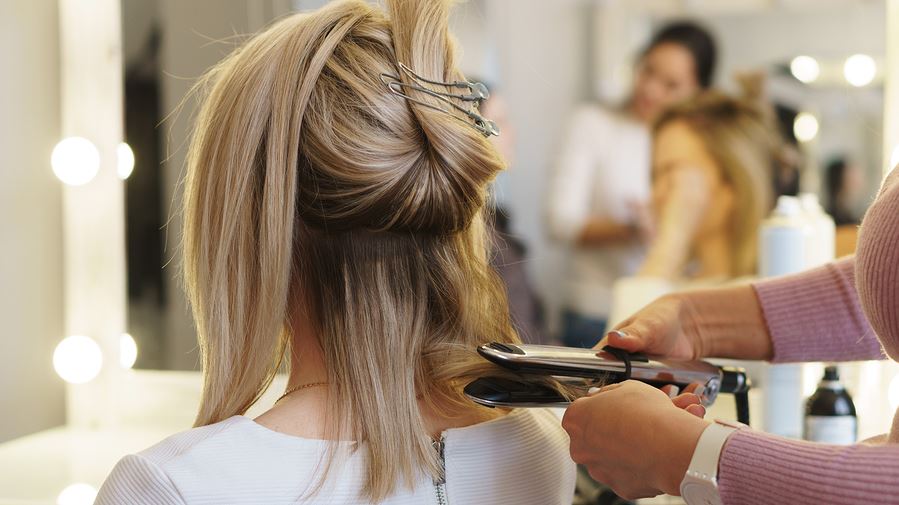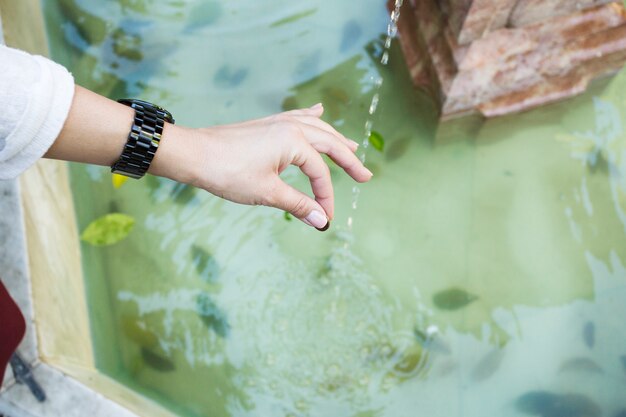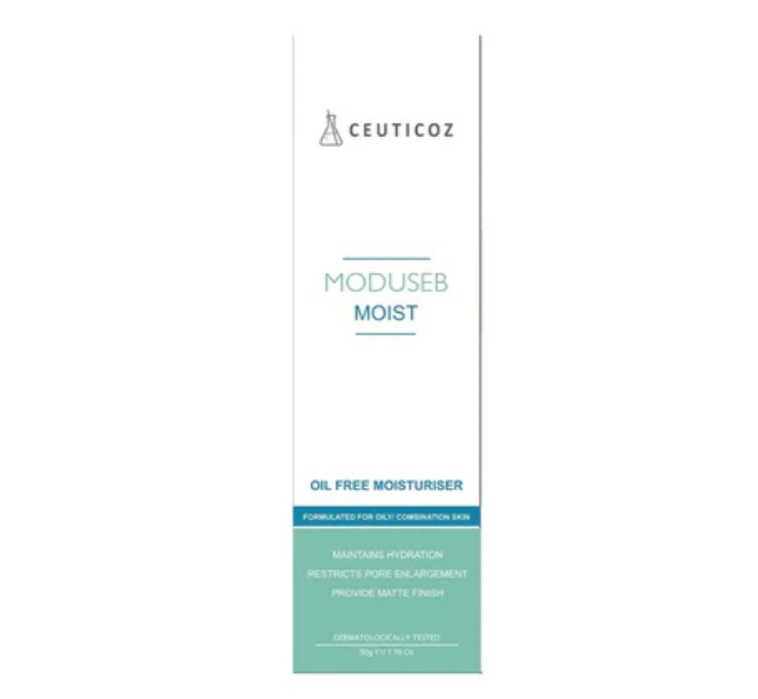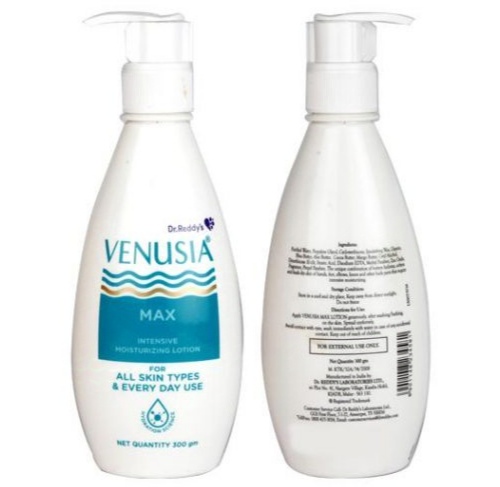Your hair is a reflection of your health, lifestyle, and care habits. A well-maintained hair care routine is essential for strong, shiny, and healthy locks. But with the myriad of products, methods, and advice out there, it can get overwhelming. This guide simplifies hair care for women by breaking down easy-to-follow steps and essential tips to keep your hair in its best condition.
Understanding Your Hair Type
Before jumping into the perfect hair care routine, it’s crucial to identify your hair type. Various hair types need specific care routines.
- Straight Hair: Tends to be oily and shiny but can lack volume.
- Wavy Hair: Has a natural bounce but can get frizzy.
- Curly Hair: Often dry and prone to breakage.
- Coily Hair: The most fragile and needs intense moisture and gentle care.
Knowing your hair type helps in choosing the right products and care methods for your specific needs.
Building a Basic Hair Care Routine

1. Cleansing: Shampoo Your Hair the Right Way
Washing your hair and scalp is the basis of any hair care routine, as it eliminates dirt, excess oil, and product buildup.
- Frequency: Depending on your hair type and lifestyle, you may need to shampoo anywhere from daily to once a week. Oily hair might need more frequent washing, while dry or curly hair may benefit from less.
- Shampoo Selection: Opt for sulfate-free shampoos as they are less harsh and won’t strip your hair’s natural oils. Look for shampoos designed for your hair type (moisturizing for dry hair, volumizing for thin hair, etc.).
- Technique: Focus on massaging the scalp, as this is where oil and dirt accumulate. Let the shampoo rinse through the ends rather than scrubbing them directly, which can cause damage.
2. Conditioning: Lock in Moisture
Conditioning is crucial for keeping your hair hydrated, manageable, and smooth.
- Frequency: Condition every time you shampoo.
- Application: Focus on the mid-lengths to the ends of your hair. Avoid applying conditioner to the scalp as it can weigh down the roots and make your hair greasy.
- Leave-In Conditioners: For extra hydration and detangling, use a leave-in conditioner after you rinse out the regular one. These are particularly great for curly or dry hair.
3. Deep Conditioning: Extra TLC Once a Week
Weekly deep conditioning treatments can make a world of difference for your hair’s health, especially if it’s dry, damaged, or chemically treated.
- Hair Masks: Invest in a good hair mask or deep conditioner suited to your hair type.
- DIY Masks: You can make your own deep conditioner at home with ingredients like coconut oil, honey, and avocado for a more natural approach.
- Heat Cap: For maximum absorption, use a heat cap or wrap your hair in a warm towel after applying the mask.
4. Detangling: Handle with Care
Tangles are inevitable, but how you manage them can make or break your hair (literally).
- Tools: Use a wide-tooth comb or a detangling brush. Begin detangling from the ends and gradually work your way up to the roots.
- Conditioner: Always detangle when your hair is damp and has some slip from a conditioner or detangling spray.
- Be Gentle: Never yank through knots. Be patient to avoid breaking or damaging your hair.
5. Drying: Avoid Heat Damage
How you dry your hair is just as crucial as how you wash it.
- Air Drying: Allow your hair to air dry whenever possible. Pat (don’t rub) your hair with a microfiber towel or an old cotton T-shirt to absorb excess moisture.
- Blow-Drying: If you must blow dry, use a heat protectant spray and keep the dryer on the lowest heat setting. Keep it at least 6 inches away from your hair.
- Diffuser: Curly-haired women should use a diffuser attachment to enhance curls and reduce frizz while blow-drying.
6. Protect from Heat and Styling Tools
Excessive heat from styling tools can lead to dry, brittle hair. When using hot tools like curling irons, straighteners, or blow dryers, always:
- Use a Heat Protectant: This is a non-negotiable step to minimize heat damage.
- Limit Heat Styling: Try to restrict heat styling to a few times a week. Opt for heatless styles when possible, like braids or overnight curls.
- Adjust the Temperature: Use the lowest effective heat setting. High temperatures are only necessary for very thick or coarse hair.
7. Regular Trims: Prevent Split Ends
Regular trims keep your hair looking fresh and healthy by removing split ends before they travel up the hair shaft, causing more damage.
- Frequency: Aim for a trim every 6-8 weeks, especially if you’re growing out your hair.
- Split End Treatments: If you can’t get a trim as often, use a serum or hair oil to temporarily seal split ends.
Nourishing Your Hair from the Inside
Hair care isn’t just about the products you use externally. What you consume plays a massive role in hair health.
- Hydration: Stay well-hydrated by drinking plenty of water to maintain moisture in your scalp and hair.
- Balanced Diet: A diet rich in vitamins and minerals, particularly biotin, zinc, and omega-3 fatty acids, promotes hair growth and strength.
- Supplements: If your diet is lacking, consider hair-boosting supplements like biotin or collagen.
Protecting Your Hair from Environmental Damage

Your hair faces environmental stress daily, from the sun to pollution. Protect it with these tips:
- Sunscreen for Hair: Yes, it exists! Use UV-protectant sprays or serums to shield your hair from the sun’s harmful rays.
- Cover Your Hair: On extremely sunny or windy days, wear a hat or scarf to prevent exposure and moisture loss.
- Swim Protection: Chlorine from pools and saltwater can strip your hair. Always wet your hair with fresh water before swimming and rinse it thoroughly afterward. Apply a leave-in conditioner or a protective spray before diving in.
Styling Your Hair the Right Way
Everyone loves a good hairstyle, but styling can sometimes cause harm. Here’s how to protect your hair while still enjoying a good hairdo:
- Avoid Tight Styles: Constantly pulling your hair into tight buns or ponytails can cause breakage and hair loss. Opt for loose hairstyles as often as possible.
- Satin or Silk Pillowcases: These materials reduce friction between your hair and pillow, preventing tangles and breakage while you sleep.
- Use Hair-Friendly Accessories: Choose hair ties without metal clasps and opt for scrunchies, which are gentler on your hair. Avoid overusing hair clips and pins in the same spot daily.
Adapting Your Routine with the Seasons
Your hair’s needs change with the seasons, so it’s essential to adjust your routine accordingly:
- Summer: The sun, heat, and humidity can make your hair greasy, frizzy, and prone to UV damage. Use lightweight, hydrating products and keep your hair protected from the sun.
- Winter: Cold air and indoor heating dry out your hair. Deep conditioning and moisturizing products should be your go-to. Avoid washing too frequently, as it strips away natural oils.
- Spring/Fall: These transitional seasons are a good time to focus on recovery. Rebuild hair strength with nourishing oils and serums after summer or winter damage.
Essential Ingredients to Look for in Hair Care Products
When selecting hair care products, keep an eye out for beneficial ingredients:
- Coconut Oil: Nourishes and conditions hair deeply.
- Argan Oil: Adds shine and reduces frizz.
- Shea Butter: Moisturizes and protects dry hair.
- Keratin: Strengthens and repairs damaged hair.
- Aloe Vera: Calms the scalp and provides hydration to the hair.
Avoid products containing alcohols, sulfates, and parabens, as they can dry out or damage hair in the long term.
Conclusion: Consistency Is Key
There’s no magic formula for perfect hair, but a consistent routine tailored to your hair type will yield incredible results over time. Whether you have curly, straight, or wavy hair, the combination of proper cleansing, moisturizing, and protection will ensure your locks remain luscious and healthy.
Maintaining healthy hair requires a mix of good products, gentle handling, and a bit of patience. As you make your routine a habit, your hair will thank you with softness, shine, and strength.










